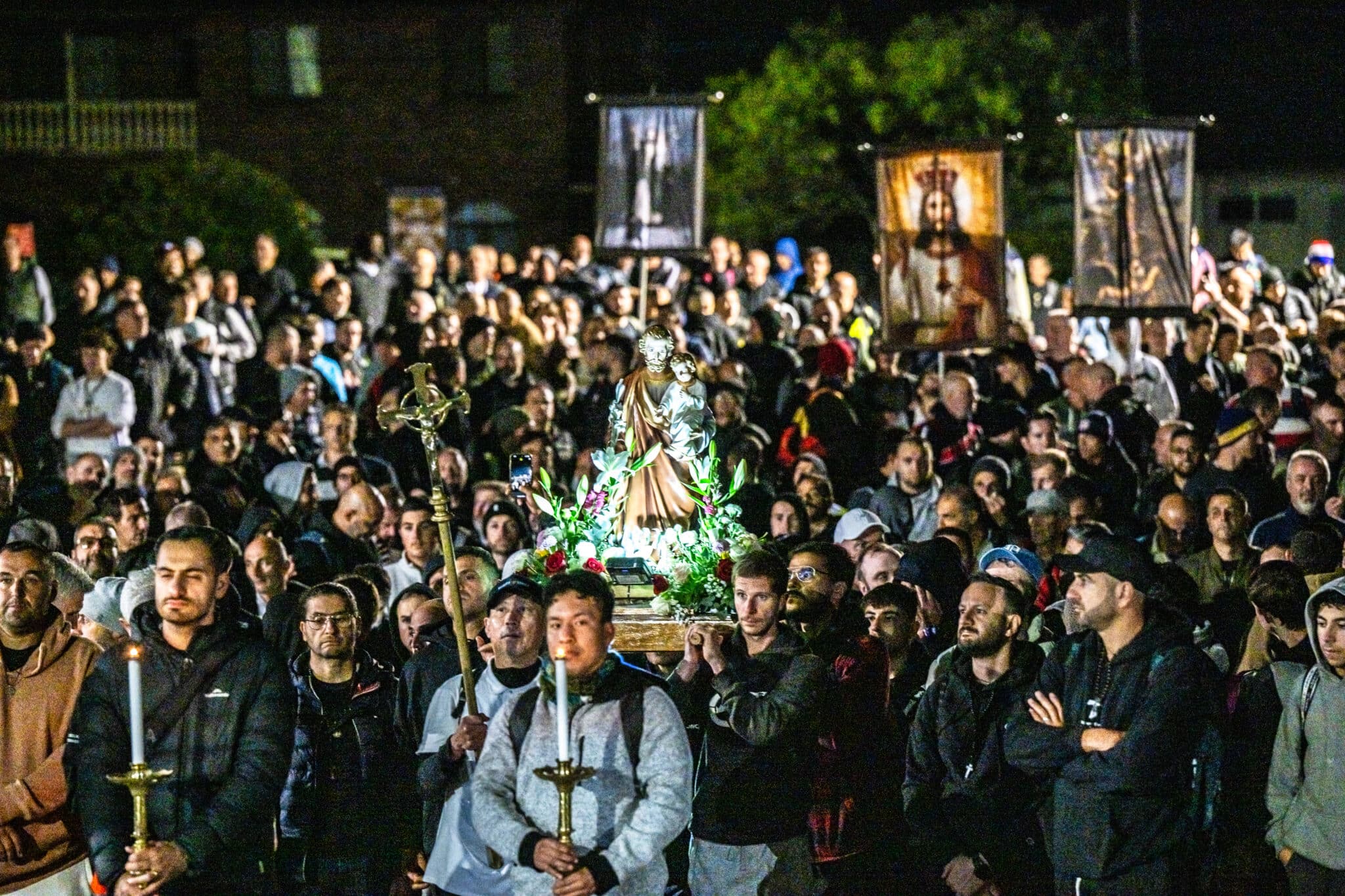
Last week’s The Catholic Weekly featured images from the Camino of St Joseph, a 22km overnight walking pilgrimage on which men visit seven southwest Sydney churches. At each church, there is a reflection offered by the priest of the parish, a period of Eucharistic adoration and the recitation of a decade of the rosary.
Held close to the feast of St Joseph the Worker by the Sydney Centre for Evangelisation, the pilgrimage has grown to attract more than 700 men in a public expression of faith.
As I looked at the images and the accompanying video, I couldn’t help but think back to two weeks prior to that event, when another very large group of men gathered in southwest Sydney, also motivated by faith (at least in part).
Instead of public prayer, they engaged in a riot in which scores of police cars were damaged and two officers injured.
As governments, church leaders and others in society review and reflect on the Wakeley riot, many are asking how to prevent such an occurrence from happening in the future. I have heard some suggest more mental health support in those parts of Sydney, others have suggested greater education in schools, or more statements from church leaders condemning violence and radicalisation.
On the face of it, the two gatherings could not have been more different. One was beautiful and inviting; the other ugly and terrifying.
But after looking at the camino and the riot side by side, I was left wondering if there was not some connection between the two that might assist with the increasingly elusive goal of social cohesion.

What if, instead of focusing on the difference between the groups (one was Catholic, the other Orthodox; one was peaceful, the other violent; one was prayerful, the other angry), we focused on what the similarities might be?
After all, there were certainly Catholics in the riotous group outside Christ the Good Shepherd that night, many of whom walked away from their Catholic faith in frustration over bishops who complied with church closures during COVID.
They found a champion in Mar Mari Emmanuel, who used his social media platforms to rail against the lockdowns and those who obeyed them. Recall that southwest Sydney was subject to more extreme lockdowns than those in other parts of the city.
Without wanting to make sweeping generalisations, each group also contained men of the same demographic: many from southwest Sydney, immigrants or first-generation Australians for whom the public expression of faith is inseparable from their ethnic identity.
They would have had similar upbringings, similar education levels and a similar socio-economic status.
What if we were able to look at the Camino of St Joseph and see in that a potential answer to the question of how to get the rioters to direct their zeal and passion for their faith and their religious leaders in a more productive manner that doesn’t require them to reject or even tone down their testosterone levels?
The Camino of St Joseph and the men’s rosary held outside St Mary’s Cathedral each month do not try to hide the masculine aspect of the event. Indeed, these events showcase and even celebrate it.
Men are invited to do something that is physically difficult, be it kneeling on the cathedral forecourt (even in torrential rain) or walking through the night, stopping only for prayer.
They are invited to do something that is brave, by giving public witness to their faith at a time when the expression of religious belief in the public square has seen many lose jobs or friends.
They are invited to do something that is exclusively for men, which is increasingly important in a church where women make up the majority of those who attend Mass, are the majority of those serving in parish ministries, and comprise more than three-quarters of all church employees.
There are no band-aid solutions to the problem of male violence. But maybe church leaders could consider finding more ways to intentionally involve men in the church’s life and allow them to regularly express their faith and their masculinity in healthy and productive ways.
The popularity of the men’s events in Sydney and their particular resonance with migrant communities in the southwest cannot all be accidental. Most probably they are meeting a very real need. I’d love to see more of them.
